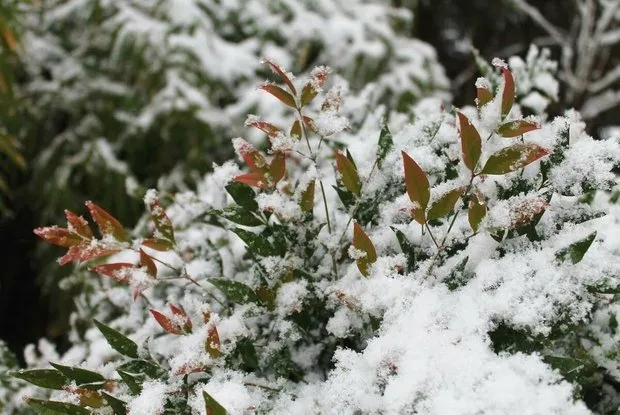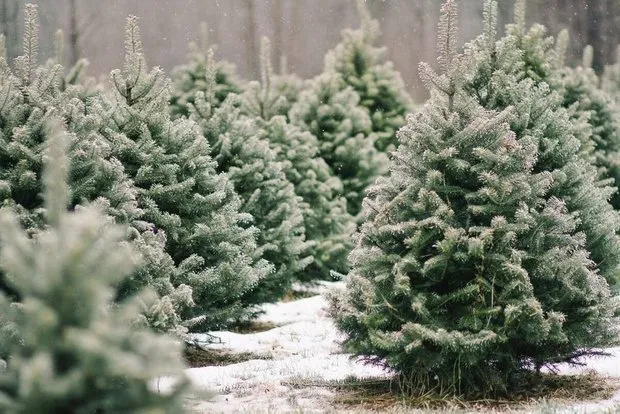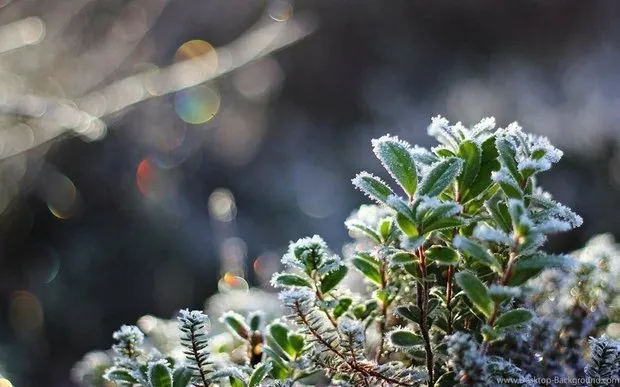There can be your advertisement
300x150
6 Things to Do in the Garden on Your Summer Plot This Week
Simple tips from professionals
This applies to coniferous plants with wide, fluffy crowns. Gently shake off the heavy snow to avoid breaking and deforming branches.
 2. Protect Young Trees from Frost
2. Protect Young Trees from FrostIf you haven't done this in autumn, wrap young trees with high open trunks: fruit crops, elms, maples, ashes, linden, rowan. In March – early April, sudden temperature fluctuations are still possible, and tree trunks need protection from cracks.
You can use burlap or reed matting all the way up the trunk – from the root neck to the first branches.
3. Prevent Evergreen Plants from Waking Up Too EarlyIn spring, temperatures rise, and the evergreen crown starts to transpire water. However, the roots are still under a thick layer of ice and snow and do not function. As a result, plants begin to dry out.
This often happens with rhododendrons and coniferous plants: western thuja, Canadian fir "Conica", practically all columnar junipers, and some pines.

To prevent plants from waking up too early, you need to lower the temperature. If it's about small plants like junipers or dwarf rhododendrons, it's enough to cover them with snow from walkways so they melt gradually.
For larger plants, you can make a shade cover from material that does not let sunlight through. A facade mesh, burlap, or muslin will work. Do not use non-woven materials like spandex, agrospan, or polyethylene – they will actually increase the temperature around the crown and worsen the situation.
 4. Prune Shrubs
4. Prune ShrubsIn northern-western regions of Russia, weather allows pruning in late March. But before taking on this challenging task, you can attend a few thematic lectures. If you prune the plant incorrectly, it will weaken and die.
Which types of plants can be pruned in spring?
Hydrangeas – mophead and tree types – should be pruned quite heavily: remove all thin and weak shoots, and shorten the remaining ones to 5–6 buds.
Autumn-flowering Japanese spireas respond well to pruning and shaping: with each season, they become denser and more compact. Bushy heather also reacts well to pruning: it produces new shoots and blooms actively.
What should not be pruned?
Maples or birches (their sap flow starts early), rhododendrons, lilacs, and spring-flowering spireas.
 5. Prune Fruit Plants
5. Prune Fruit PlantsThis procedure is better left to professionals, and then you can try pruning with a secateur yourself. However, there are several general rules:
- Prune branches pointing inward toward the crown;
- Remove vertically protruding shoots;
- Check that branches do not rub against each other;
- Do not cover the damaged surface after pruning with garden varnish. Under a layer of wax, bacteria actively develop, and the tree may die. For prevention, use copper-based solutions: copper sulfate, Hom, Ordone, Oxichom, Abiga-Pik.
Set up feeders: they not only help birds, who currently have almost no food, but also decorate the garden. To avoid mistakes in selection, buy ready-made feed at pet stores. Unsuitable foods like black bread or pearl barley can make birds seriously ill.
 What to Do Before Going to the Dacha?
What to Do Before Going to the Dacha?If you plan to grow vegetable seedlings or store tubers that do not overwinter in the ground like dahlias, begonias, and gladioli, start planting them in pots on the windowsill. This way you will have a chance to see blooming in late summer before frost arrives.
More articles:
 Incredibly Cozy Studio 29 m²: How People Live in Compact Spaces in Sweden
Incredibly Cozy Studio 29 m²: How People Live in Compact Spaces in Sweden Cool Kitchen Tips for a Хрущевка That Everyone Can Replicate
Cool Kitchen Tips for a Хрущевка That Everyone Can Replicate 6 Frustrating Mistakes During Renovation You Will Never Make Again
6 Frustrating Mistakes During Renovation You Will Never Make Again How an Ordinary Khrushchyovka Became a Cool Loft Studio
How an Ordinary Khrushchyovka Became a Cool Loft Studio How to Avoid Mistakes in Renovation: 10 Commandments from a Designer
How to Avoid Mistakes in Renovation: 10 Commandments from a Designer 5 flaws in the foyer that can be fixed over the weekend
5 flaws in the foyer that can be fixed over the weekend Collection with Character: 10 Brutal Interiors by Designers
Collection with Character: 10 Brutal Interiors by Designers Main Trends in Window Decoration for 2022
Main Trends in Window Decoration for 2022